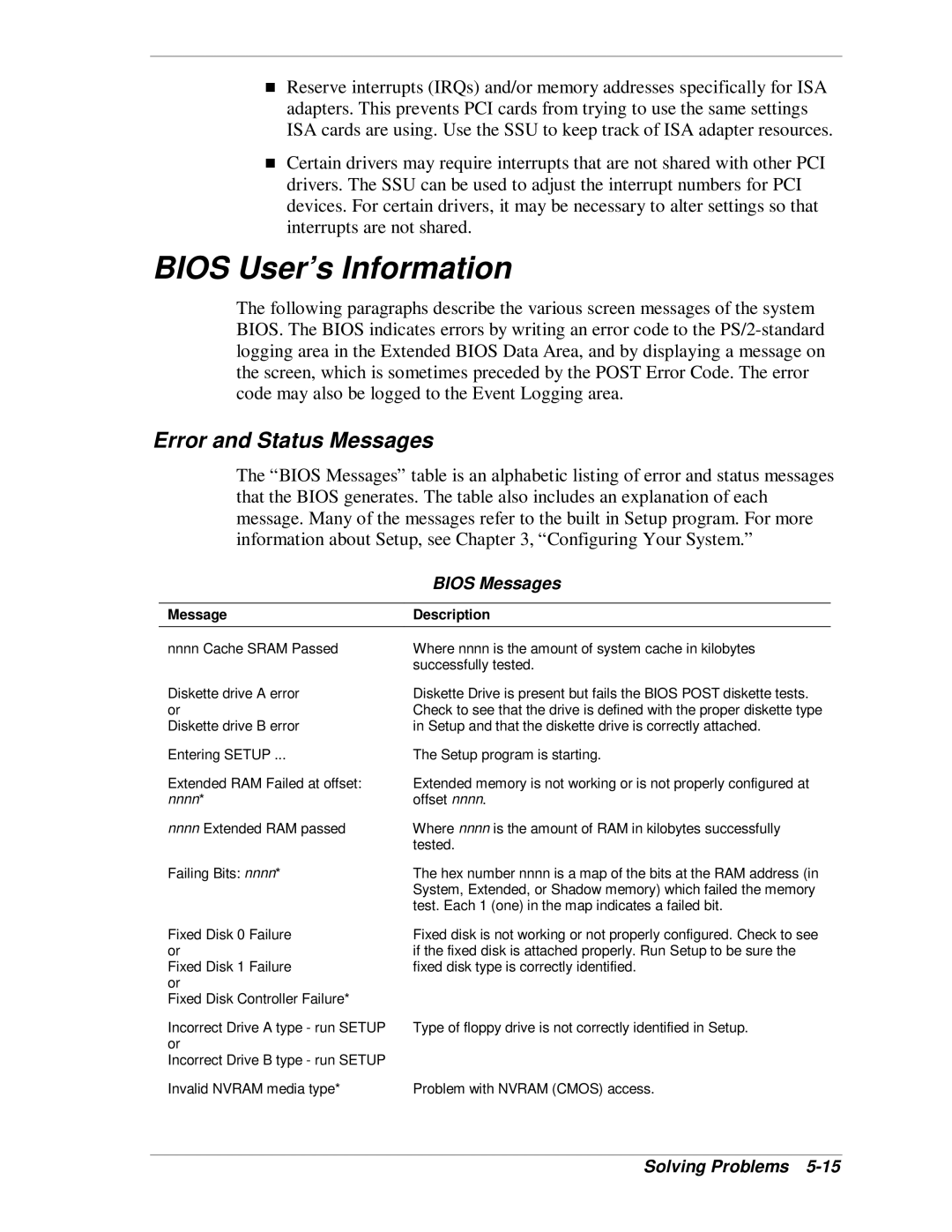
Reserve interrupts (IRQs) and/or memory addresses specifically for ISA adapters. This prevents PCI cards from trying to use the same settings
TISA cards are using. Use the SSU to keep track of ISA adapter resources.
Certain drivers may require interrupts that are not shared with other PCI drivers. The SSU can be used to adjust the interrupt numbers for PCI devices. For certain drivers, it may be necessary to alter settings so that interrupts are not shared.
BIOS User’s Information
The following paragraphs describe the various screen messages of the system BIOS. The BIOS indicates errors by writing an error code to the
Error and Status Messages
The “BIOS Messages” table is an alphabetic listing of error and status messages that the BIOS generates. The table also includes an explanation of each message. Many of the messages refer to the built in Setup program. For more information about Setup, see Chapter 3, “Configuring Your System.”
| BIOS Messages |
|
|
Message | Description |
|
|
nnnn Cache SRAM Passed | Where nnnn is the amount of system cache in kilobytes |
| successfully tested. |
Diskette drive A error | Diskette Drive is present but fails the BIOS POST diskette tests. |
or | Check to see that the drive is defined with the proper diskette type |
Diskette drive B error | in Setup and that the diskette drive is correctly attached. |
Entering SETUP ... | The Setup program is starting. |
Extended RAM Failed at offset: | Extended memory is not working or is not properly configured at |
nnnn* | offset nnnn. |
nnnn Extended RAM passed | Where nnnn is the amount of RAM in kilobytes successfully |
| tested. |
Failing Bits: nnnn* | The hex number nnnn is a map of the bits at the RAM address (in |
| System, Extended, or Shadow memory) which failed the memory |
| test. Each 1 (one) in the map indicates a failed bit. |
Fixed Disk 0 Failure | Fixed disk is not working or not properly configured. Check to see |
or | if the fixed disk is attached properly. Run Setup to be sure the |
Fixed Disk 1 Failure | fixed disk type is correctly identified. |
or |
|
Fixed Disk Controller Failure* |
|
Incorrect Drive A type - run SETUP | Type of floppy drive is not correctly identified in Setup. |
or |
|
Incorrect Drive B type - run SETUP |
|
Invalid NVRAM media type* | Problem with NVRAM (CMOS) access. |
